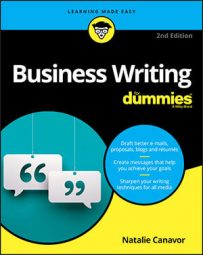One way is to build the proposal into the selling process and make it a simple agreement — confirmation of a plan already discussed. You can create a logical sequence to cover what’s necessary, or even use a letter format. This approach requires a different selling process because it builds on a personal discussion of the job at hand rather than analysis of a written request.
The first step is to achieve that conversation. As any sales professional can tell you, aim for a face-to-face meeting with your prospect. Then write the proposal based on what you discover. Proposals based on phone conversations, or worse yet, written exchanges, are harder sells. Ideally, you want to gain a second appointment to present your solution — that is, your proposal.
At the first meeting, rather than aggressively selling your qualifications, hold a conversation. Encourage the prospect to talk. A beginning that often works well is, “I’d love to know how you came to this position.” Listen very carefully and use friendly prompts to keep the person talking and gently steer the direction. Ask open-ended questions:
- What problem would you most like to solve?
- How is this problem affecting your business?
- What difference would solving it make for you?
If the conversation indicates a mutually beneficial arrangement is possible, you can prepare your informal written proposal. This can cover
- The problem you propose to address
- Why that problem is important
- What you recommend
- How you will carry the program out step by step
- What will result
- Mutual obligations, time frame, and so on
- Your fee
Here’s an example of a common-sense proposal to pitch for an opportunity in the business of teaching business writing:
A Workshop Proposal for Whiteflag, Inc.
From CC Writing Workshops
I am pleased to propose a series of writing workshops to help Whiteflag customer service representatives handle customer complaints more effectively and actively build customer relations through email and letters.
The Problem: Alienated customers
Your recent review of 24 representatives’ interactions with customers showed:
- A growing number of complaints from customers unhappy with how their problems were handled
- An abrupt, sometimes rude tone in many outgoing messages
Impact of the problem on Whiteflag:
The situation is adversely affecting your company. In your own analysis, it is a major factor in a recent 4 percent decline in your customer base.
CC Writing Workshops proposes:
(A step-by-step outline of the proposed workshop series — specific but very concise — goes here.)
Program goals:
The workshop series will achieve …
(List the outcomes you aim for that correspond to the problems and note if possible how results will be measured.)
How we will work together:
(Describe the collaborative planning, time frames, and obligations of each party.)
The presenters:
(Indicate who will deliver the program and their credentials.)
Fee structure:
(State your project fee or hourly rate, which should protect you from “scope creep”; for example, cite extra charges for work that exceeds the parameters you set.)
Agreed to by: ______________________
The entire document can be just a few pages. If you want it to be really informal, format it as a letter that begins with a salutation — “Dear Jane” or “Dear Ms. Brown.” Some more standard sections, like the “presenters” section that describes staffing and credentials, can be done as a separate add-on.
Your tone and language for an informal proposal are just as important as for a formal one. After all, you’ve spoken personally with the individual who might hire you. You’ve also seen how he presents, what his office looks like, how he communicates, what sparks his interest and concern, and how important the problem is to him. Be alert to all these clues and picture him in your mind as you write.
Ultimately, most contracts and assignments are won in person but writing is the essential first step toward most opportunities. You rarely get in the door without a first-rate proposal. Good writing and the good thinking it reflects can be a great leveler. There are many cases where a small David beat a smug Goliath to win stellar opportunities, and companies that have built their entire success on very good writing.A good letter introducing yourself — another kind of proposal — can work wonders in many circumstances. This may seem like a simple task, but often, the less room you have to frame an “ask,” the better you need to think it out.

